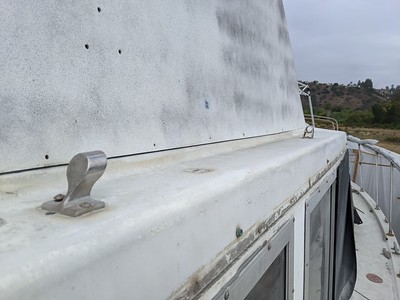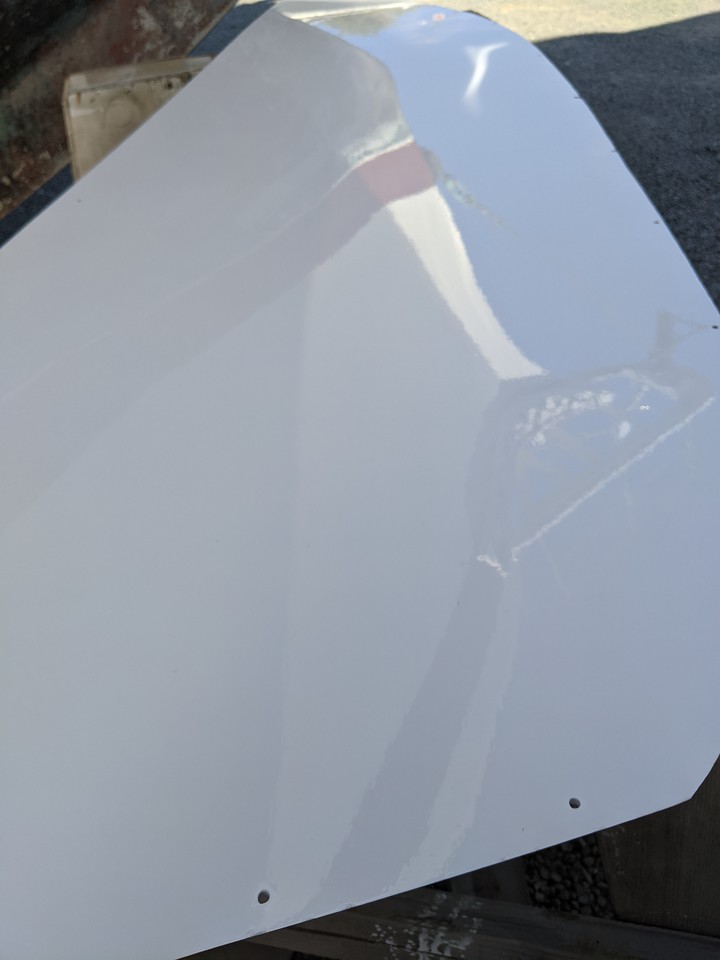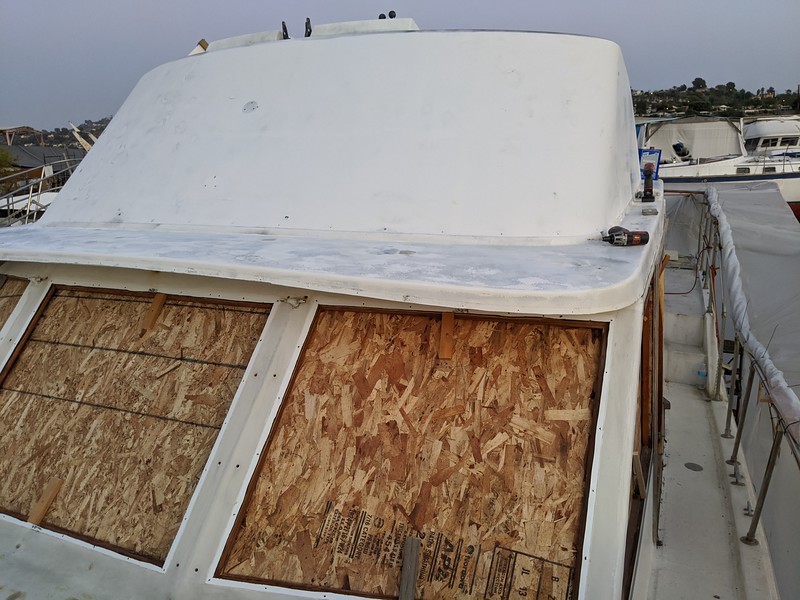Still making progress although it does not seem like it at times. The work on the starboard side, I had a professional boat finisher stop by and look at the work. He commented that it was very wavy, 'fun house mirror like' and that I wasn't going to be very pleased with the results.
He explained the solution which involves a lot more labor. I purchased some durablock 'longboard' sanding blocks and we've been block sanding the hull. This has made a significant improvement to the fairness of the surface. He demonstrated the techniques and myself and my helper have been working through this work, it's tedious and physically difficult. I can see and feel the difference though!
I had put four coats of Interlux Primekote epoxy primer on the starboard side and we sanded most of it off with this blocking/fairing. That has been completed on the starboard side and I am two coats in on putting new epoxy primer over the faired surface. Still a couple more coats of Primekote before the top coat can go down.
On the port side, I decided to put a high build epoxy primer first so that we could sand that down and not spend so much time applying paint. Interlux Interprotect 2000 HS is a high solids epoxy primer that does not require sanding between coats (Primekote does) so it was significantly faster to get the a good build up of paint applied. The blocking is about 3/4 done on that side now and then it will get the Primekote as the underlay for the top coat.
I've also started blocking the cabin sides, flybridge surround and transom, all by hand. My approach continues to refine as we learn the process and get better and find more efficient ways to do the work. I think that the cabin sides will be the fastest work yet (although still a ton of time and work) as we use a refined process. The end result should be very good, at least I hope. The decks will be done last.
Here is the starboard side with three coats of Interprotect HS on it, the Interprotect is grey in color.
The latest iteration of our process STARTS with block sanding by hand. We clean and dewax the faded, cracked gelcoat and then put a guide coat paint on it. Guide coat is just an inexpensive spray paint that is easily wiped or sanded off, it is applied with just a 'speckle' of coverage.
Next we block sand until we are smooth as we can get or we are starting to run into the fiberglass (running out of gelcoat thickness). The guide coat reveals areas that need filling very clearly.
We apply filler to those areas, block sand again with a second guide coat and the surface is ready for primer paint or it may need another round of filling. If the surface is uneven enough, we may need to put the high build paint on and that's easy to see during the sanding process with the guide coat. Both of the hull sides were in that state.
Here is the flybridge surround with the 'guide coat' applied.
On the cabin sides I removed all the hardware for handholds and snaps for covers and they also received the same treatment and were block sanded smooth, the windows will be remove prior to painting and re-bedded after painting.
The hull construction is interesting, the cabin top is screwed onto the sides and the flybridge is screwed onto the cabin top. The aft portion of the cabin top has some filler that cosmetically covers the screws and attachment point, but does not appear to be structural. The flybridge also has some filler 'attachments' that are not structural.
I've also been working on getting various systems ready for launch, most recently I'm overhauling the aft head and also the aft head vacuum pump. Ordered parts to do all of that and should have the head in good shape soon.








